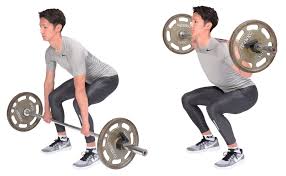# Start Strong! The Ultimate Beginner's Blueprint for Bodyweight Mastery
Embarking on a journey to physical fitness can be as daunting as it is exciting. With the plethora of training routines out there, it's easy for a beginner to feel overwhelmed. Fear not, intrepid newcomer, for bodyweight exercises offer a straightforward, yet highly effective path to building strength, agility, and confidence. This ultimate beginner's blueprint for bodyweight mastery is your trusty guide to starting strong and carving your path to peak physical condition no equipment required.
The Allure of Bodyweight Training
Bodyweight exercises for beginners are the perfect starting point for many reasons. Firstly, they're incredibly accessible. Whether you're in a tiny apartment, a bustling park, or a spacious gym, your workout space is wherever you plant your feet. Secondly, bodyweight exercises are scalable. They grow with you, from the simplest forms to advanced variations that challenge even seasoned athletes. They also reduce the risk of injury associated with heavy lifting and provide a solid foundation for any future training you might dive into.
The Cornerstones of Mastery
Before we plunge into the specifics, let's establish the cornerstones of bodyweight training: consistency, progression, and form. Consistency is about making exercise a habit; progression involves gradually increasing the difficulty of your workouts; form is ensuring that each movement is performed correctly to prevent injury and maximize benefits.
First Steps into Fitness
Imagine your body as an orchestra every muscle has its part to play in the symphony of movement. As conductor, you must ensure that each section learns its role before tackling complex compositions.
-
The Warm-Up: Begin each session with 5-10 minutes of dynamic stretching or light cardio to get your blood flowing and muscles ready.
-
Core Engagement: Your core is the stabilizing center of your body. Start with planks (front and side variants) and progress to leg raises and bird-dogs for a well-rounded core routine.
-
Lower Body Basics: Squats and lunges are your foundational lower body exercises. Master these movements with proper form before adding jumps or one-legged variations for increased difficulty.
-
Upper Body Building Blocks: Push-ups and dips target your chest, shoulders, and triceps while pull-ups (or inverted rows if pull-ups are too challenging at first) strengthen your back and biceps.
-
Total Body Control: Exercises like burpees combine elements of strength, endurance, and coordination, offering a comprehensive workout.
Cultivating Progression
As you grow stronger, so too should your workouts. Add repetitions, slow down movements to increase time under tension or introduce isometric holds at the end of a set (like holding the bottom position of a squat). The beauty lies in simplicity: slight tweaks can present new challenges.
For instance:
-
Elevate your feet during push-ups.
-
Incorporate jump squats.
-
Transition from knee planks to full planks.
Rest and Recovery
Remember that muscles grow during rest periods, not while you're working out. Adequate sleep and rest days are crucial components of any training regimen. Overtraining can lead to injury and burnout enemies of progress.
Nutrition: Fueling Your Engine
You wouldn't expect a car to run without fuel; similarly, your body needs nourishment for energy and repair. Prioritize whole foods rich in protein, carbohydrates, fats, vitamins, and minerals. Hydration is equally important water aids every bodily function including muscle recovery.
Setting Goals & Tracking Progress
Set SMART goals Specific, Measurable, Achievable, Relevant, and Time-bound to keep yourself accountable. Record your workouts: note the exercises done, repetitions completed, and how you felt afterward. This log becomes both a motivator (showcasing how far you've come) and an invaluable tool for planning future workouts.
Common Pitfalls to Avoid
-
Skipping Warm-Ups: Neglecting this step increases injury risk.
-
Rushing Progression: Respect your body's pace; more difficult doesn't always mean better.
-
Poor Form: This can negate the benefits of exercise and cause harm. When in doubt, seek guidance from tutorials or fitness professionals.
-
Neglecting Rest: Overtraining sabotages results.
Finding Community & Staying Motivated
Join online forums or local workout groups where you can share experiences, get advice, or simply find camaraderie among fellow fitness enthusiasts. Motivation can wane; a community helps reignite it.
Incorporating Variety & Fun
Variety isn't just the spice of life it's also essential in keeping workouts enjoyable and effective by preventing plateaus. Try new exercises or variations to keep both mind and muscles engaged.
Your First Milestone Workout
Now that you're armed with knowledge let's put it into practice with a simple starter workout:
-
Dynamic Warm-Up: 5 minutes
-
Plank: 2 sets x 30 seconds
-
Squats: 3 sets x 15 reps
-
Push-Ups: 3 sets x as many reps as possible (with good form)
-
Lunges: 2 sets x 10 reps per leg
-
Inverted Rows or Assisted Pull-Ups: 3 sets x as many reps as possible
-
Cool Down Stretch: 5 minutes
Start by doing this workout three times per week on non-consecutive days.
The Path Ahead
As you embrace this beginner's blueprint for bodyweight mastery remember that every expert was once a beginner too. Celebrate each victory along the way be it an extra rep or a newfound spring in your step.
Begin with belief belief in the process and yourself and let that propel you forward on this exhilarating journey toward strength and vitality through bodyweight exercises for beginners. Welcome to the community; welcome to your transformation!
